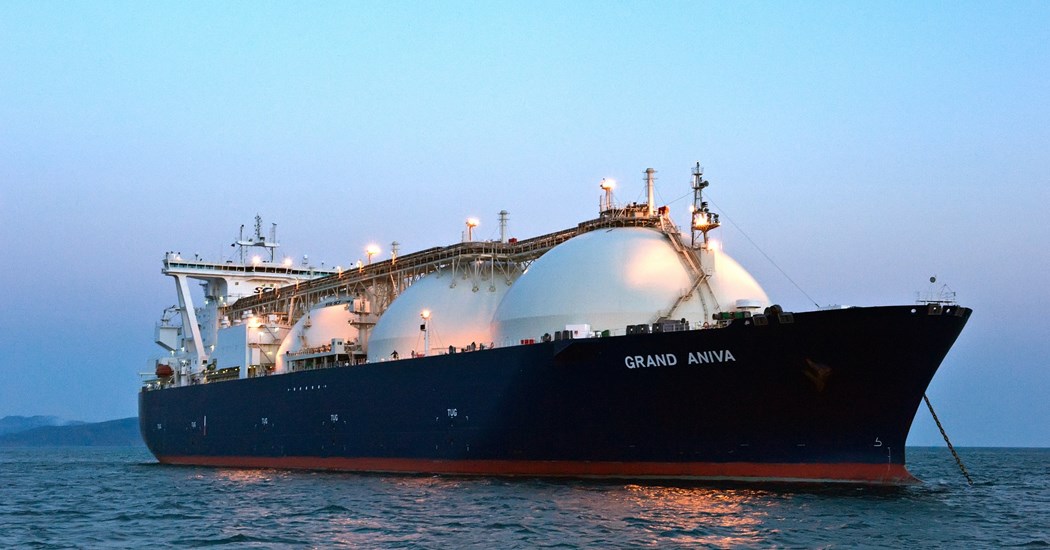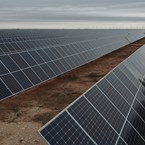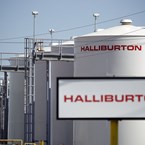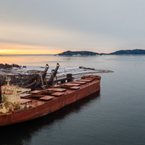Impact of the Suez blockade on LNG sector
By: Head of Gas and Power Markets Carlos Torres Diaz, Rystad Energy
It’s not often that LNG vessel traffic is disrupted and the current blockade at the Suez Canal can be considered as a major obstacle for LNG flows to Europe, it is a rather unusual event.
The Suez Canal is one the world’s busiest trade routes, and this blockade is having great implications on global trade, including LNG, as shipments to Europe from one of the world’s largest LNG producers - Qatar – essentially all pass through there.
The Canal is the main route for LNG cargoes heading from the Middle East to Europe and for some cargoes heading from the Mediterranean to Asia. During 2020, close to 260 LNG cargoes were sent from Qatar to Europe via the Suez Canal, or an average of five per week.
Data shows that currently there are three loaded cargoes in the Suez Gulf waiting to cross to the Mediterranean that were originally expected to arrive at European regasification terminals during the first week of April.
There are at least another two in the Arabian Sea that are headed to the Suez Canal. These cargoes have a combined capacity of more than 1 million cubic meters of LNG or close to 0.5 million tonnes that cannot be delivered to their European buyers.
Dredges are already in place trying to dig out the huge Ever Given vessel to liberate the route. But according to preliminary reports from rescuers, the canal could even remain blocked for several weeks.
Assuming an average of five vessels per week, around 1 million tonnes of LNG could be delayed for delivery to Europe if the blockage last for two weeks. In a worst-case scenario of the Canal being blocked for four weeks then there would be 2 million tonnes of delayed cargo deliveries.
The voyage from Suez to northwest Europe (eg Isle of Grain in the UK) takes around nine days at an average speed of fifteen knots.
The complete route from Qatar to northwest Europe takes around 17 days and the alternative route around the Cape of Good Hope would take more than 30 days, making this an unviable option, at least for the time being.
Even if the route is liberated within one week, there is a large queue of cargoes lining up to cross the Canal, so the return to normal flow will take some time. And the longer it takes to liberate the route, the longer the queue of vessels.
European natural gas demand has started to wane with warmer temperatures but the continent needs continuous supplies of LNG to replenish the low underground stock levels.
Given that Russian pipeline supplies to Europe are currently below maximum capacity, Russian supplies could help provide some flexibility so the blockade will inevitably support gas prices across Europe.
Looking at who benefits most from the current situation, Russia is definitely the country that is not in a hurry to see the blockade resolved.
Norway would normally get a boost too, being Europe’s second largest gas supplier, but its pipeline system is already running at almost maximum capacity.
Gas prices for same-day and day-ahead delivery though are set for gains the more the blockade lasts, while future contracts see a lesser effect.
It is interesting to see if the US will try to benefit from the Suez blockade as shipments from its LNG export facilities could reach Europe much quicker than a vessel starting from the Middle East that would go around Africa.
The US gas production is set for a continuous monthly increase and it could be a perfect opportunity for US producers to secure some orders at a time of such a transport route crisis.
The current situation could also in turn affect LNG vessel shipping rates for product of US origin, as demand could rise.
KEEPING THE ENERGY INDUSTRY CONNECTED
Subscribe to our newsletter and get the best of Energy Connects directly to your inbox each week.
By subscribing, you agree to the processing of your personal data by dmg events as described in the Privacy Policy.

Energy Workforce helps bridge the gender gap in the industry
Mar 08, 2024
EGYPES Climatech champion on a mission to combat climate change
Mar 04, 2024
Fertiglobe’s sustainability journey
Feb 29, 2024
P&O Maritime Logistics pushing for greater decarbonisation
Feb 27, 2024
Neway sees strong growth in Africa
Feb 27, 2024
India’s energy sector presents lucrative opportunities for global companies
Jan 31, 2024
Oil India charts the course to ambitious energy growth
Jan 25, 2024
Maritime sector is stepping up to the challenges of decarbonisation
Jan 08, 2024
COP28: turning transition challenges into clean energy opportunities
Dec 08, 2023
Why 2030 is a pivotal year in the race to net zero
Oct 26, 2023Partner content

Ebara Elliott Energy offers a range of products for a sustainable energy economy

Essar outlines how its CBM contribution is bolstering for India’s energy landscape

Positioning petrochemicals market in the emerging circular economy

Navigating markets and creating significant regional opportunities with Spectrum




























